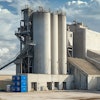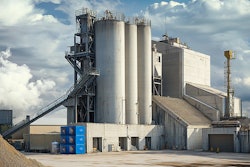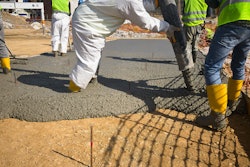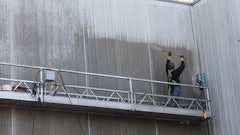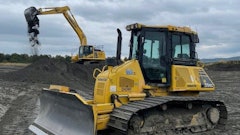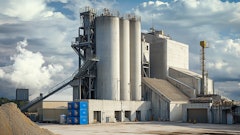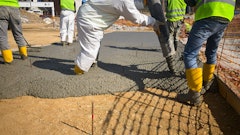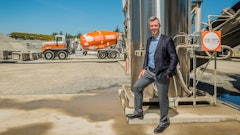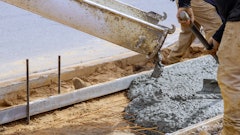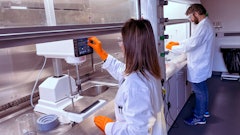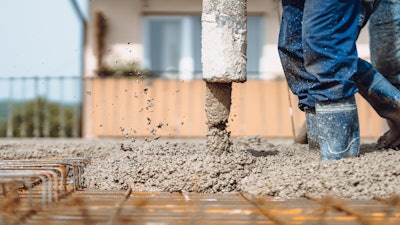
Concrete is at the heart of construction, and the push toward greener solutions has introduced new technologies that directly impact how concrete is made, used, and ultimately performs. One of the latest advancements in this realm is the integration of carbon dioxide (CO2) into concrete through direct air carbon capture (DACC) technology.
The process of integrating CO2 into concrete involves injecting captured carbon dioxide into the mix during the production phase. This CO2 reacts with calcium ions in the cement, creating calcium carbonate and contributing to a denser microstructure. That’s why this integration provides benefits beyond emissions reduction—it enhances certain properties of concrete that are critical to contractors.
The use of CO2-infused concrete offers practical improvements for contractors in terms of performance, sustainability, and compliance with new standards. By employing recent innovations in DACC, contractors can access CO2 as a feedstock closer to their sites, minimizing transportation needs and ensuring timely integration into the production process. This modular and localized capture of CO2 represents a step forward in aligning the concrete industry with broader emissions reduction goals.
Key Benefits of CO2-infused Concrete
- Workability: One of the most important aspects of any concrete mix is its workability—the ease with which it can be mixed, placed, and finished. CO2 integration has been found to marginally improve workability, primarily due to the densification of the concrete mix and the smaller particle size distribution that results from the reaction between CO2 and cement. Contractors may find that CO2-infused concrete requires less water to achieve the desired consistency, which can be particularly beneficial in achieving a workable mix in challenging environmental conditions.
- Setting Time: The setting time of concrete can significantly impact project timelines. While traditional concrete relies on precise water-cement ratios and ambient conditions, CO2-infused concrete has demonstrated slightly accelerated setting times. For instance, research has demonstrated that the initial setting time can be enhanced by approximately 95 minutes, and the final setting time by about 103 minutes, when CO2 is incorporated into the mix. This is due to the formation of calcium carbonate, which contributes to earlier strength gains. For contractors, this translates into potential savings in labor costs and shorter waiting times before subsequent construction phases can begin. However, it's essential to consider that accelerated setting may require adjustments in the timing of placement and finishing to avoid issues with surface quality.
- Durability: Durability is a key consideration for both the contractor and the client, as it determines the longevity of concrete structures. CO2 integration has been shown to enhance the durability of concrete by improving its density and reducing porosity, leading to enhanced durability. This densification results from the formation of calcium carbonate within the concrete matrix, which fills voids and strengthens the material. The reaction with CO2 creates a denser matrix, making the concrete less permeable and better able to resist common forms of degradation such as freeze-thaw cycles and chloride penetration. Research has shown that the compressive strength of concrete subjected to early-age freeze-thaw cycles can be significantly enhanced, with increases of up to 21.98% for certain concrete grades. Contractors working on projects in harsh climates or with exposure to deicing salts will find CO2-infused concrete to be a valuable asset for improving the life span and durability of their structures.
Project Costs, Timelines, and Potential Savings
The use of CO2-infused concrete has implications not only for material properties but also for project costs and timelines. While the upfront costs of adopting carbon capture technologies and CO2 integration may be higher, there are significant benefits that can lead to overall savings for contractors.
- Reduced Cure Times and Strength Gains: CO2 integration can lead to faster early strength gains, allowing for quicker formwork removal and the ability to move onto subsequent phases sooner. Contractors can benefit from shorter overall project durations, which can reduce labor costs and improve scheduling efficiency. In practice, the reduced cure times mean that projects with tight timelines can see notable efficiency improvements, helping contractors meet deadlines and avoid penalties associated with delays.
- Material Efficiency and Cost Savings: By improving the workability of concrete, CO2 integration can lead to reduced water usage and potentially lower cement content while still achieving the required performance standards. This can help to lower material costs without sacrificing quality. Additionally, the increased strength and durability of CO2-infused concrete mean that contractors can achieve structural requirements with potentially less material, contributing to cost efficiency.
- Meeting Sustainability and Emission Standards: Increasingly, contractors are being asked to demonstrate their compliance with environmental standards and reduce their carbon footprints.provides a tangible way to achieve these sustainability goals. The adoption of DACC technology, with its modular design that allows CO2 capture close to the source, helps contractors access a sustainable feedstock while minimizing transportation-related emissions. By using CO2-infused concrete, contractors not only enhance the performance of their projects but also position themselves as leaders in adopting greener construction practices—a factor that can make a difference in securing future contracts.
Challenges & Considerations for Contractors
While the benefits of CO2 integration into concrete are clear, there are also challenges that contractors need to consider. The technology is relatively new, which means that not all suppliers may have the capability to produce CO2-infused concrete. Contractors will need to work closely with suppliers to ensure consistent quality and understand any changes required in their current workflows.
Furthermore, while accelerated setting times can be advantageous, they may require more precise timing in terms of placement and finishing, particularly in hot or windy conditions where rapid setting could lead to unwanted cracking or surface issues. Training crews to work effectively with CO2-infused concrete is crucial for achieving the desired outcomes.
DACC plays a pivotal role in advancing CO2 integration into concrete. By making CO2 capture modular and localized, DACC ensures that the carbon dioxide needed for concrete production is readily available, reducing the logistical complexities and costs associated with sourcing CO2. This approach aligns with industry efforts to lower emissions across the entire supply chain and helps contractors meet increasingly stringent environmental standards.
For construction and concrete industry leaders, understanding the implications of CO2 integration is more than just an environmental consideration—it is about performance, efficiency, and staying competitive. As the industry continues to evolve, technologies like DACC are making it possible for contractors to build stronger, more durable structures while contributing to a more sustainable future.
CO2-infused concrete, enabled by DACC technology, is shaping the future of construction by offering enhanced workability, faster setting times, and increased durability. While there are challenges to consider, such as supplier availability and the need for crew training, the potential benefits—including reduced project timelines, cost savings, and improved sustainability—make this an exciting development for the industry. For contractors, adopting CO2-infused concrete is not just about meeting new standards; it’s about delivering higher quality and more resilient projects that stand the test of time.




